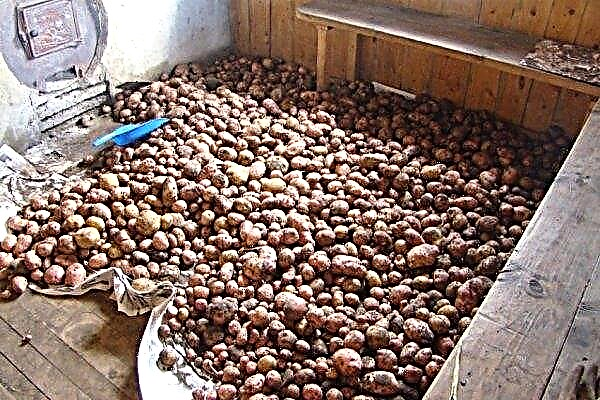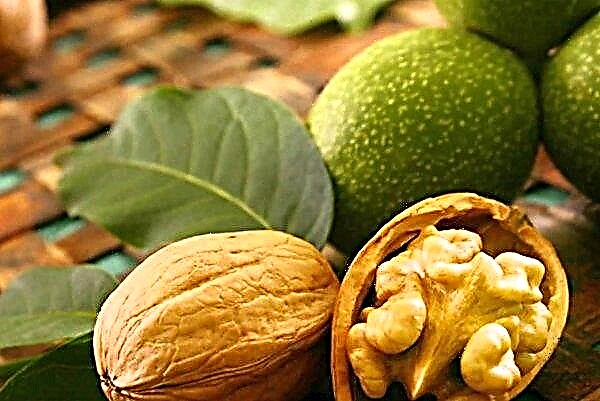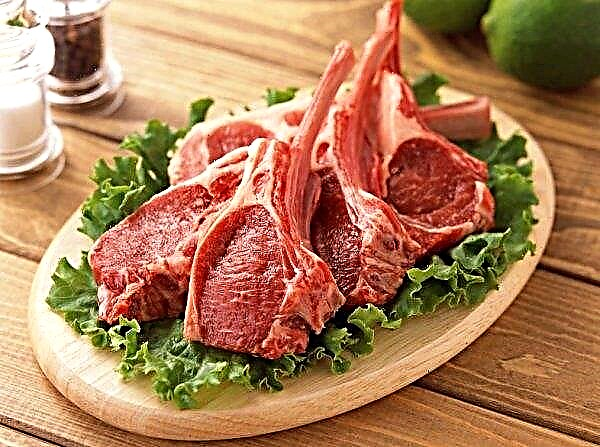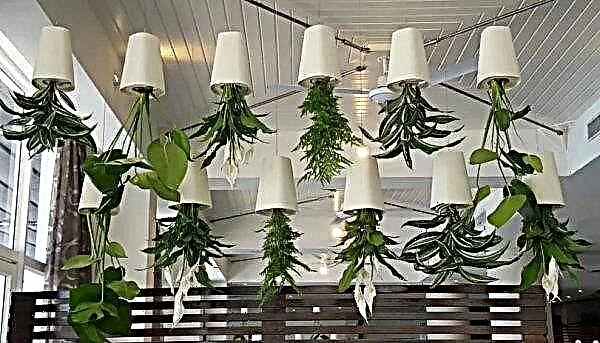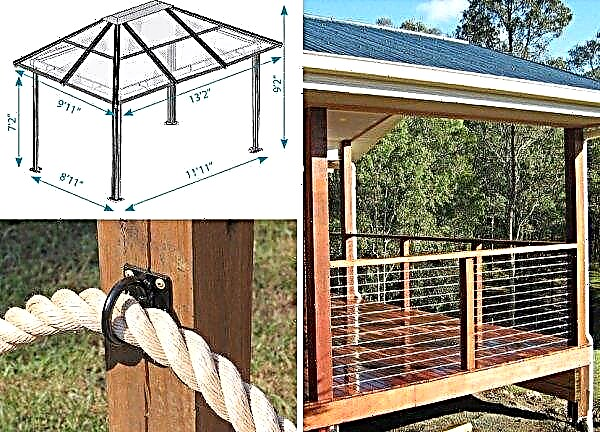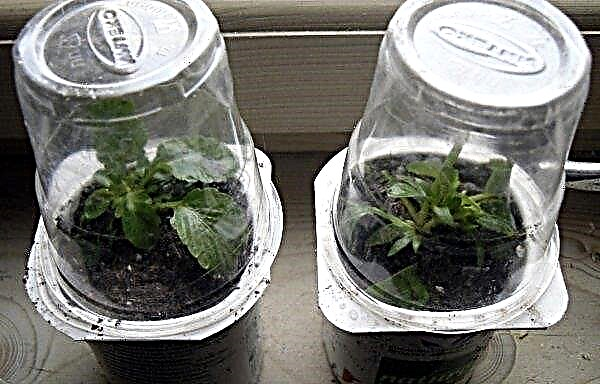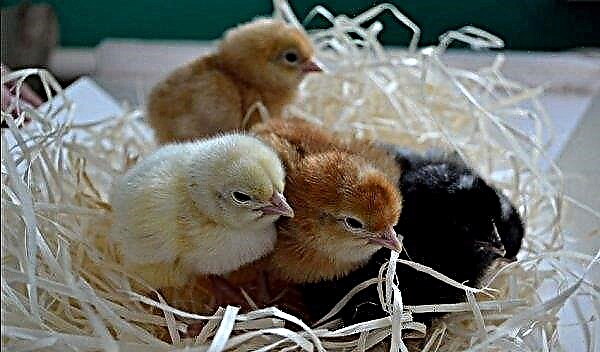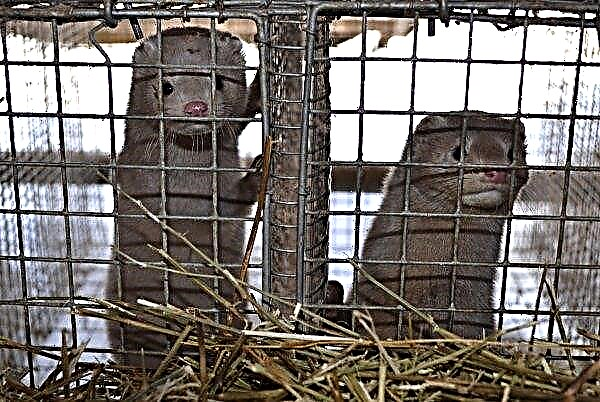Apricot is a delicious and healthy fruit. For its cultivation, it is necessary not only to carefully choose the soil and areas, but also species that are suitable for this type of terrain. Today there are many of them, and everyone is famous for their taste and qualities, but one of the most delicious and fruitful remains the long-term Khabarovsky variety, because in addition to a generous harvest and a sweet taste, it also pleases resistance to many climatic conditions, which greatly simplifies planting and care.
General characteristics of the variety
Today apricot Khabarovsk is considered deserved among fruit trees, it is distinguished by simple agricultural technology and good productivity. The breeder G. T. Kazmin is called the father of this variety. He bred it in 1949, crossing apricot Michurinsky and Krasnoshchekoy. After such an experiment in 1971, the fruit was sent for testing, and fully authorized for use and planting in 1979.
Growing Regions and Ripening Period
You can meet this fruit in the southern regions of Primorsky and Khabarovsk Territories, as well as in the Far East. Characteristic for the species early flowering, it begins on May 18–25. The flowers are large (3-4 cm in diameter) and rounded, white in color with a pale pink hue, the petals are weakly closed, which makes them a magnificent decoration of the garden.
Apricot of this variety is cold-resistant. When grown in other areas and regions, the flowers do not fall, and the ovaries remain intact, despite frequent late frosts. Ripening period, compared with other fruit trees, is also quite early - July 28-30.
Biological description of a tree
Apricot Khabarovsky is represented by huge perennial trees with a not very dense, but spreading crown, which over the years acquires a large magnificent shape. Dun branches are wide and thick with many axial bands. Early shoots are lush and long, on young trees reach 1–1.5 m.

Due to the rapid growth, the tree trunk reaches large sizes - about 10 m in height. Fruit buds are located on the sides, they are large, slightly flat, pointed in shape. They have a flat top and a recessed base. They can rarely be found single, often grow in two or three.
The leaves on the tree are thick, medium in size, oval and long, with a sharp elongated end. The leaf plate is pale matte and densely green, and on the underside is light green in color. The cuttings of the leaf are burgundy with a red tint, and the edge is serrate.
Characterization of fruits and their purpose
Fruits have a rounded conical shape, slightly compressed, with a sharp top and a deepened base. The mass reaches 25–35 g, and some 45 g. The surface is very pubescent, the skin is pale yellow with an orange-red blush, not lagging behind. The main color is creamy yellow.
Pulp creamy, very dense and juicy. Bone oval and slightly convex with pronounced ribs and a pointed abdominal suture. Core sweet. By taste rating, melting in the mouth the sweet and sour taste of apricot Khabarovsky has a solid four on a five-point scale. Due to its delicate texture, the fruit is often used to make juices and jams.
Did you know? Apricots are very rich in potassium. Their regular use cleanses blood vessels and strengthens the heart muscle.
Productivity and Transportability
Fruiting apricot begins at 4-5 years of his life. Harvest volume, as a rule, from one tree per season, you can collect 30–35 kg of fruit. The largest figure that still remains a record is 45 kg. As for the transportability of apricots, it is below average. Having a pleasant presentation, these fruits are not intended for transportation.
Advantages and disadvantages of the variety
The apricot Khabarovsky gained popularity for a reason. Many gardeners highlight the advantages, thanks to which he occupies an honorable place.
- Pros:
- resistance to adverse climatic conditions;
- annual high yield;
- large and juicy fruits;
- immunity to most diseases;
- appetizing look;
- well propagated by seeds.
- Minuses
- The disadvantages of this fruit are very few - only two. But compared with its advantages, they are insignificant. The plant has poor cold tolerance in the lowlands, and there is also no adaptability to transportation.
Despite these two points, he is still preferred in orchards and fruit plantations. The main selection criteria are amazing frost resistance. Bred in cold climates, and thanks to this, the buds of the tree do not freeze even at temperatures up to –30 ° C.
Landing Features
Most of the rules for planting apricots are also used for other types of fruit trees. If you choose the right place, soil and time, landing will be correct and will not create trouble.
You need to be careful when choosing seedlings. They are not recommended to be bought on the market, because in this case one cannot be sure of quality, moreover, a sick plant or the wrong variety may be sold to you. It is better to buy seedlings in special nurseries. Particular attention is paid to the roots. They should not have signs of any change, dryness or freezing.
The timing
You can plant a tree not only in spring but also in autumn. Each period has pros and cons. For example, in the fall the plant will have time to gain strength and be healthy, but it needs to survive the winter. And in the spring, everything happens the other way around - there may be problems with planting materials, but this is offset by the long, hot summers, during which the apricot has time to take root.
Important! In autumn, it is better to choose the beginning of October for planting, and in April - April.
Location and layout
The place is better to choose a sublime and well-lit. It is important to protect the fruit from through winds, and in lowlands wind resistance is reduced. In addition, the soil is not very moist in such areas, which also plays an important role.
 The optimum acidity coefficient in the soil is neutral or weak, and the soil is loose with weak loam. Groundwater should be far from the surface so that the roots do not begin to rot.
The optimum acidity coefficient in the soil is neutral or weak, and the soil is loose with weak loam. Groundwater should be far from the surface so that the roots do not begin to rot.
Tulips can be planted in a circle around the trunk, but it is not recommended to choose a place where cherries or peaches used to grow, and it is better to refuse the neighborhood with raspberries and currants. You need to prepare the soil in advance so that the soil has time to gain nutrients and settle, then there will be enough space at the roots to accommodate, and the chances of a good and quick survival will increase.
Work order
Landing work will give good results if all stages are done correctly. To preserve the required amount of moisture 20 minutes before planting, the seedling must be dipped in an earthenware mash.
The recommended size of the pit is 80 × 80 cm, and it is advisable to put drainage on its bottom, this will help protect the roots from excessive moisture. A stake with a height of up to 1.5 m is driven into the center of the prepared hole, then to tie a tree to it. First, the roots need to be carefully straightened, and then covered with earth to the level of the root neck, which should not go deep into the ground. Then the seedling is tied to a stake, well tamped with earth and watered.Important! The root neck should be 3-4 cm above the ground.

Plant care
For a generous harvest, it is important not only to plant the apricot correctly, but also to know what kind of care he needs. In spring, you can not do without pruning the crown of the tree, because only young shoots bear fruit well. It is necessary to monitor the formation and growth of the crown in the right direction, this is one of the main components for future fruiting. Care in the fall is to prepare the apricot for wintering and create the most comfortable conditions for it in cold frosts. In hot summer, the tree provides the right amount of moisture. Do not forget about fertilizers, it depends on how the young seedling takes root and how it will develop in the future.
Watering
Apricot roots can get water from the soil layers, so they do not need irrigation often. Young seedlings need to be watered 1-2 times a week, and then reduce the number to 2-3 in a month. In the spring, it is important to ensure that melt water does not accumulate in the circumferential circle and does not flood the tree. In normal weather, adult trees are watered only with a lack of rain moisture. The first watering is done in April, then - in May, the most important - in the summer, but in autumn it is better to do this in October.
Pruning
Every year in early spring, sanitary pruning is carried out. It is better to choose April, then you can no longer be afraid of night frosts, and the cuts on the tree will quickly overgrow. The top is cut to 1/3 of the entire height, for young seedlings that are 2-3 years old, they also cut branches, leaving 2 healthy buds on them. In the first years after pruning, the branches should be at a distance of 35–45 cm from each other, thus forming a crown. First, branches are shortened at a height of 1 m from the ground, then branches along the main row, only a conductor of 20-30 cm is left.
The correct formation of the crown not only increases the overall productivity of the tree, but also contributes to the early ripening of fruits. One-two-year-old seedlings, which first suffered the winter, also remove frostbitten branches, if any. In the fall, the tree is cut to restore the balance between deciduous and fruitful branches, a third of all fruitful branches are removed, the frame ones are not touched, only if they grow incorrectly. Sick and dried branches are removed to the base. During the winter, the tree will gain strength, and young green sprouts will appear on them.
Fertilizer application
It is possible to increase soil fertility in different ways, but the best and simpler option is a mixture of peat, sand and clay with the addition of compost. As mineral fertilizers, you can use wood ash or potassium sulfate. To keep moisture near the roots longer, and weeds do not make their way out into the soil in a circle around the trunk, you can fertilize humus.
The first feeding should be done when the apricot reaches 3 years. In the spring, you can use top dressings that contain nitrogen, and in the summer provide phosphorus. During the fruiting period, the amount of fertilizer is doubled. Prevention of apricot also does not hurt. You can spray the tree with Bordeaux liquid, not only after harvesting, but also before flowering, as well as after autumn harvesting of leaves.
Winter preparations
The Khabarovsky variety tolerates the winter period without problems, but preparation for winter is needed, this is an important process on which not only the volume of fruits in the next year depends, but also the general well-being of the tree. In the fallen leaves for the winter, insect pests hide, so the leaves are burned. Insects are carriers of bacteria and microbes that provoke diseases. To some of these diseases, the plant does not have immunity, and it can die. An equally important stage of preparation is the whitewashing of the trunk.
An equally important stage of preparation is the whitewashing of the trunk.
This is necessary as protection against eating rodents and to prevent the reproduction of insects. Young trees have a weak root system, so they need to be covered with dense material, such as burlap, so the trees will not freeze during prolonged frosts.
Diseases and Pests
Apricot of this variety has good immunity to fungal infections, which greatly simplifies the cultivation and care of it. But some pests threaten him. For example, a butterfly codling moth is gray-brown in color, which multiplies between branches.
Newly arrived caterpillars immediately begin to eat the fruits, rendering them unusable. To prevent the appearance of the codling moth, you need to carefully clean the area, especially remove old stumps in which the insect leaves its offspring.
Large colonies may appear on the back of the trees. aphid. These parasites are treated with insecticides until they disappear completely. Aphids are very dangerous, it sucks sap from young trees and they gradually dry out, it also reduces resistance to cold and disease, spreads viruses and fungus. These parasites appear in hot weather, so the best prevention is to detect the pest in time. Then, for the winter, the tree must be sprayed with hot water (+ 80 ° C) or with a Nitrofen solution.
To prevent such pests from appearing, you need to remove weeds around the trunk in time, regularly water and fertilize. The smell of parsley or calendula can attract ladybugs to the garden to quickly deal with insects. But the ants are carriers of aphids, they also need to get rid of.
For weevil beetle buds, leaves and even flowers are a treat. To protect a tree, it is treated with Decis. But it’s recommended to use Diazonin’s solution from larvae of gherkins.
Apricot is characterized by diseases such as hole spotting. It forms red and burgundy spots on the leaves, which are quickly eaten by the fungus, and then dry and fall off. With hole spotting, reusable (4–5) times treatment with fungicides is needed. For prevention, it is necessary to cut off diseased affected branches on time.
In the flowering period threatens monilial burnif neglected whitewash. Its main sign is the decay of the flower. The fungus falls from the body of the insect on the flowers and leaves, the affected areas of the plant turn black, creating the appearance of a burn. It is very important to remove all diseased areas in time to stop the spread of the disease. From a monilial burn, spraying with copper oxychloride will help.
Do not forget about the disease of the cortex, which is called cytosporosis. The fungus can completely affect the bark, falling into it through poorly processed cracks, and makes it rotten. Typically, damaged areas are cut off, leaving healthy wood, disinfected with a solution of copper sulfate, and the wound is covered with garden var.
To prevent the occurrence of any pests and diseases, the tree requires careful maintenance, timely watering, pruning, well-prepared and fertilized soil.
Harvesting and storage
The fruiting period of apricots is not long, and the amount of harvest immediately requires processing, since their storage time is limited. The fruits are harvested when they grow to the desired size, acquire the color characteristic of the variety, but the flesh must be dense. At the time of collection, they manage to collect the right amount of nutrients. But, for example, it is better to choose fruits with a light yellow color for transportation, approximately 3-4 days before full maturity, and not overripe, but hard fruits are more suitable for preservation.
It is recommended to collect in dry weather, the most suitable time is from 10 a.m. to 11 a.m. and after 5 p.m.
Important! Apricots that are harvested in cold or hot weather will lose taste, weight and will be poorly stored.
At home, overripe fruits should preferably be left in the refrigerator. At ordinary temperature, they will begin to rot in a few days, lose their taste and quality. For fresh fruits, it is better to choose not plastic, but plastic containers with a lid. In the freezer, they can be kept in pieces, while the value of nutrients is not reduced much. The recommended shelf life in the freezer is 6 months.
Green fruits should not be left in the refrigerator. They mature faster at a temperature of + 10 ° C in a bright place that is well ventilated without direct sunlight. The duration of their maturation is about 5 days.
For wooden crates, apricots need to be wrapped with thin paper, remove fruits with damage or rot. Lay them in several layers, but not too tightly.

It is important not to forget to periodically check the fruit for spoiled, as in a short time they can lead to damage to everyone else in the box.
The ideal place is the cellar.Here, ripe apricots can be around a month. At home, they can be stored for about 3 weeks. When creating ideal conditions up to approximately 50 days.
Despite the fact that the Khabarovsky variety is quite old, this does not prevent it from remaining popular now. He has earned the love and respect of gardeners who have been growing it in their gardens for many years. Simple agricultural technology, a stable harvest and a unique taste make this fruit really interesting and worthy of attention.

